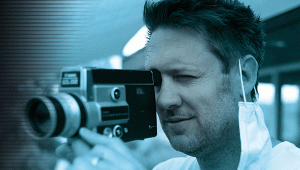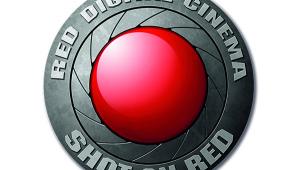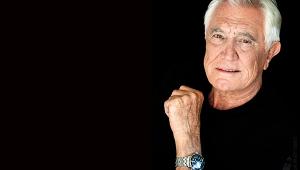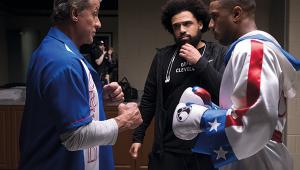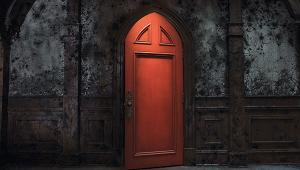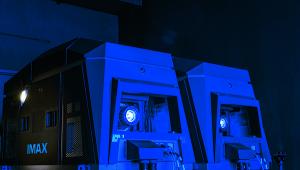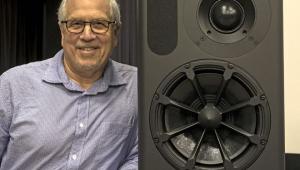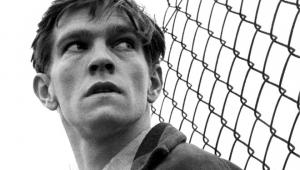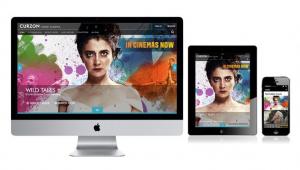Exclusive interview: McG talks This Means War
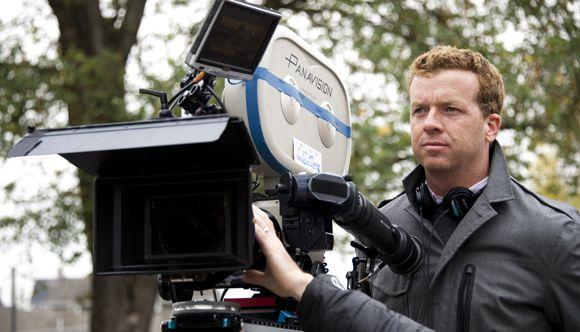
With Charlie’s Angels and Terminator Salvation on his resume, McG certainly knows hand to handle action movies – and his latest flick, This Means War, has just hit Blu-ray in the UK promising more of the same. Starring Tom Hardy and Chris Pine as rival CIA operatives fighting over the same woman, it’s perfect popcorn fodder. Just how we like it...
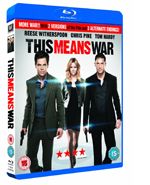
Firstly, how did you become attached to This Means War?
'Well, I knew [producers] Will Smith and James Lassiter had a script and I was interested in the notion of what would happen if Bourne and Bond were both chasing the same woman. Who wins that fight? The script was a little lacklustre – we had to go in and tune it up and do it very, very differently – but the idea was there.
'My vision was always Will Smith and Tom Cruise sitting on a couch, in terms of archetypes. Clearly they respect each other. Will Smith respects Tom Cruise’s game. Tom Cruise respects Will Smith’s game. But one would never acquiesce to the other. Never! So what happens when they’re pushed to the limit? That’s the movie.
'Those were the elements that appealed to me. And the blend of comedy and action and heart and colour and excitement – an experience I’m hoping is just a little bit larger than life, and therefore exciting in these difficult economic times'.
Every element, be it the action, comedy or romance has to work on its own terms and as part the larger dramatic story. How do you balance them all without lessening the impact of the movie?
'I don’t know. I defer to you. What film did it remind you of?'
That’s not an easy question…
'What a satisfying answer, man. You just made my day. Because if you had said ‘this film’ or ‘that film’, I would have been ‘Oh f***, I’ve ruined it. I didn’t quite achieve it.’ The fact that it can be so decidedly derivative of so many things, but in the end be it’s own thing, is the goal of the picture.
And I’m hoping we’ve done that. It’s like ‘Oh yeah, it’s a little Mr & Mrs Smith. It’s a little Ocean’s 11. It’s a little True Lies. It’s a little There’s Something About Mary.’ It’s all over the place. And I think that’s the success of Quentin Tarantino and his pictures. And though this is very different, I’m hoping it’s the success of a McG picture'.
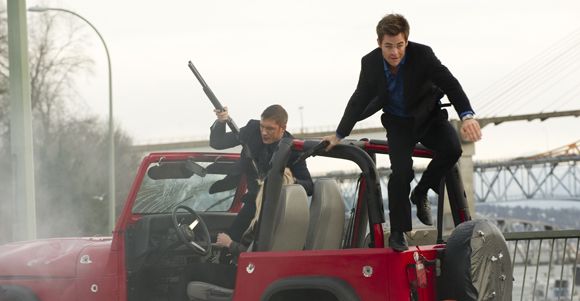
How important was the casting process to that success?
'What’s the old Robert Altman adage, that 90 per cent of directing is casting? Listen, I saw Tom [Hardy] in RocknRolla and he was playing the Handsome Bob character and I thought ‘I’ve gotta check this guy out.’ Then, of course, I saw Bronson and got wind of what he was up to. Then Inception. So I came over and met with him in London and it was so clear that he had such an active mind, and he had the intellectual capacity for that. And he’s so charismatic. So lit from within. He looks like the crazy child of Marlon Brando and Steve McQueen, you know. I was excited about that.
'Then I went to see Chris Pine in The Lieutenant of Inishmore, which is a Martin McDonagh play. And just his command of language, his timing, his comedic sensibility – and the fact that he pulled off Captain Kirk in Star Trek and did some things that really could have gone south – got me excited about him'.
What was it about Reese Witherspoon that grabbed your attention for the role as the object of the two mens’ affections? She doesn’t get too much of the onscreen action, but she’s there in the climactic car chase…
'Yeah, she’s new to action, so she was excited about it. Like most starlets she wants to do something she hasn’t done before. She didn’t want to make a rom-com; she’s the heavyweight champ So I said, ‘Guys look at you as wife material. They respect you and you’re smart. But men don’t covet you. Men don’t grit their teeth and act crazy in the pursuit of you. Let’s go there.
'So it was interesting in that regard. She really wanted to dabble in the action and be a part of a film the likes of which she had never been a part of before. And I was very, very intrigued by the prospect of making her a little bit more overtly comfortable in her skin. Giving her a little more volume in her hair, a little bit more of a smoky eye. Just a little bit more of a screen siren. And she was game for it'.
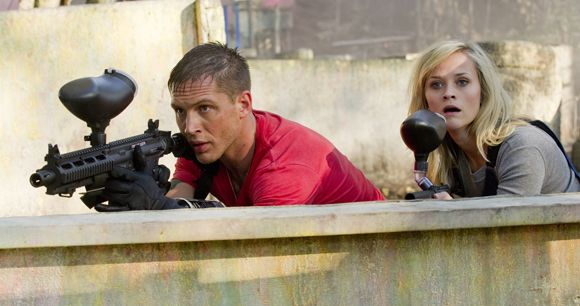
When it comes to filming action scenes, given the amount of preparation necessary and safety concerns, how much leeway is there for improvisation during the shoot?
'Well, I start the filmmaking process with a man named Adolfo Martínez Pérez, and we sit down with a blank sheet of paper and a pencil and talk about what we’re trying to achieve. We start to sketch it out and then when we feel we’ve resolved it to enough of a spot we get it to the pre-viz guys, fire it into the computer and start to shape it.
'I don’t like the overt presence of visual effects. I like to do in-camera, in-camera, in-camera, then a visual effect, then back to in-camera, in-camera. It’s just a little sleight-of-hand to give it grit and realism. So that takes a great deal of planning.
'But, there’s always the day. I like having enough freedom that if I see something that I like better on the day, we’re going to go that way. And I think that’s what it takes to achieve this level, day-in, day-out. You can’t just be robotic'.
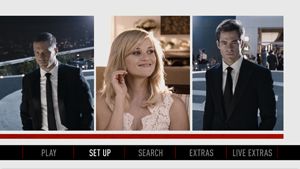 So let's talk about the Blu-ray. Can we expect much in the way of footage that didn’t make the final cut?
So let's talk about the Blu-ray. Can we expect much in the way of footage that didn’t make the final cut?
'The Blu-ray’s going to be very different. There’s a great many versions of the ending. There are three at least'.
Was there any deleted sequence in particular that gave you trouble or was cause for concern?
'The bachelorette party. It’s so decidedly rated X or hard 18 or whatever the classification is here in the UK. There’s entirely too much male nudity and, you know, women behaving badly. I’ve got to cut it and shape it a little bit, but we’re getting there. So that’s going to be on there...
'You know, I’ve never really liked Director’s Cuts. Very rarely do I prefer a Director’s Cut. There are so many… I mean, Cinema Paradiso, I really didn’t like the Director’s Cut. I’m a child of Apocalypse Now, but I didn’t love ...Redux. On and on and on, I can think of examples. But, with this film, I think there’s a solid 15-minutes that got cut out, that I think enhances the picture. That’s where I fought a little bit with the studio. And I stand by the film, the version that’s out theatrically, but I truly think that there’s a good version in what will be characterised as the Director’s Cut or Unrated or what-have-you.
Talking about Blu-ray – as a filmmaker, I’m presuming it’s something you’re pretty excited about...
'I am. Listen, I’m particular about the film stock we’re using. I’m particular about the lenses. I’m particular about the manner in which a scene is illuminated. About the production design. The costume design. The chemical bath which we run the film through. The digital intermediate where we do the colouring, which is where you get to look at exactly what the Blu-ray experience is going to look like.
'And, you know, I’m currently in the process of fitting my house with a Sony 4K projector, because I’m friends with them and they look out for me to give them feedback and stuff. So, you know, I love working in that level of detail. Yeah, I spend every night looking at a Blu-ray. That’s what I do.'
Really?
That’s how I unwind! I go home, I greet my dog and then I watch one of my favourite films. I still go to the cinema to see the new release with the crowd, because I want to feel the rhythm of the room. But then, all my favourites, I just watch over and over. I’m just such a dork that I’ll literally go to the movies and then go home and watch a Blu-ray. It’s a little bit pathological and ridiculous, but I genuinely enjoy it'.
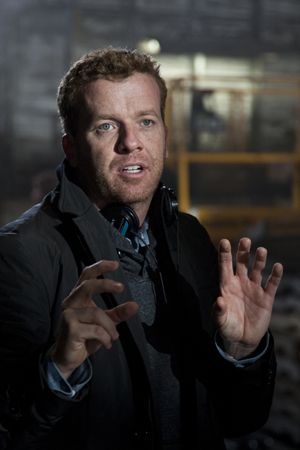 You talked about having a 4K projector, so I presume you’ve got a pretty good home cinema?
You talked about having a 4K projector, so I presume you’ve got a pretty good home cinema?
'I do, but it’s very small. It’s just three seats. But I like the screen relationship. I like to be overwhelmed by the screen. I like IMAX and it’s screen relationship. I like the immediate presence. So even though the room containing my screen isn’t very big, the screen is big – 120 inches. I’ve got a good Stewart Filmscreen. It’s wonderful'.
And a decent sound system?
'Yeah, I’ve got one with all Bowers & Wilkins and one with all Wilson Audio – they’re spectacular sounding speakers. And then I’ve got all McIntosh power. So the amps are hand-made in New York by McIntosh, an age-old audio company with a really, really clean, warm tube sound'.
From what you said before about choosing film stocks, are you an ardent supporter of film, or have you embraced digital filming technology?
'I’ve shot all of my films on film, but I am constantly testing the Red cameras, you know. I shoot a lot on ARRI’s Alexa and I’m out there playing around with Sony’s new formats.
'The one thing I don’t like about the digital formats right now is the warmth. I find them to still look too crisp. And I can treat it in a way that brings it back to a film look, but I still like committing to film as a capture mechanism. And then introducing it to the digital world so that I can colour correct and do what I do in that respect. But I find more latitude in the negative than I do in capturing it in a digital capacity.
'That’s changing by the minute. I’m not one of these guys who is hung up on film for film’s sake. Sometimes, when you have more stop in low-light situations, a digital format is desirable. But just on daylight exteriors, tungsten low light, this, that and the other; I just like the manner in which film grabs the image. It’s a little bit better, it’s got just a little bit more of a palette to play from when I get into the DI [digital intermediate]. I just like it better. So until I don’t, I’m just going to keep shooting on film.
Do you also go back and look at the DI again for the Blu-ray release?
'Absolutely. I’ll do a near-field mix, which is the mix designed to be heard in more of a home theatre environment instead of a cinema. Then I’ll also go and re-colour correct the entire picture, but I’ll do it to a monitor as opposed to a screen. I won’t do it projected. But I find it to be very true and it allows me to know exactly what we’re going to get in the takeaway experience of Blu-ray.
'You need to be very, very careful with what the Blu-ray looks like, because that will be the storage medium of note. And you’d better like the way your film looks on that or you’re going to be very disappointed. So I take a great deal of care'.
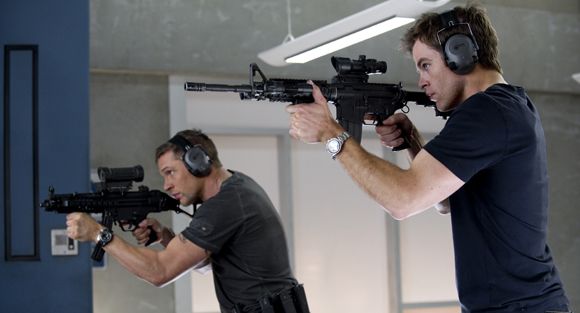
Do you see the home environment as being the main venue where people encounter your films? Or is there something still to be said for the large audience experience of a cinema?
'I think both. The social component of going to the movies, I think, protects the cinema experience. It’s more fun to see The Hangover with your mates in a big room, where you share that experience. But we’re living in an age where we have Blu-ray. Where you don’t have to be rich to have a 65in flatscreen and 5.1. You can be a run-of-the-mill working guy and still afford that stuff if you’re passionate about film'.
You can go through so much more material, too. And you also might have an appetite to see The Graduate – but it’s not playing at the local cinema’
How involved do you get in the special features on a Blu-ray?
100 per cent.
So are you planning stuff in advance of the shoot?
'Yes. You know that day is coming, so I tell the editorial staff to be cognisant all the while, then we occasionally build a few things in, that get shot on purpose which are specifically meant for the Blu-ray.
'This film will have a decidedly different Blu-ray experience and I really do think that this one is going to be for the better. I truly think that the cut that will go to Blu-ray is going to be 17 to 19 minutes longer, and it’s very substantial stuff that I think adds to the value of the picture. I stand behind the theatrical release, but what you see on Blu-ray is going to be even more rewarding'.
Finally, have you felt the lure of 3D yet?
'I have indeed. I just want to make sure that it’s applied with the right material. I don’t think that this film, for example, would be suitable for 3D. But working in that space is very exciting. It needs to be tastefully handled, though. You can’t just say, ‘Ooh, watch the spear come out of the screen!’
I think you have to do it in the spirit of storytelling. For example, the floral sequence in Avatar was very satisfying. So sometimes it’s a really elevating component to a film. Sometimes it’s just a headache. And I want to be very careful. I mean, if I made a superhero picture next, I would consider it. If I do a big action picture next, I will consider it. But, just 3D for 3D’s sake? I don’t think that’s in the best interest of the audience'.
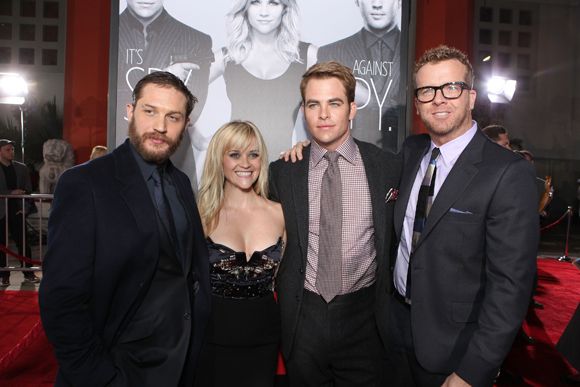
This Means War is out now on Blu-ray and DVD from 20th Century Fox.
This interview first appeared in the June 2012 issue of Home Cinema Choice.
 |
Home Cinema Choice #351 is on sale now, featuring: Samsung S95D flagship OLED TV; Ascendo loudspeakers; Pioneer VSA-LX805 AV receiver; UST projector roundup; 2024’s summer movies; Conan 4K; and more
|


